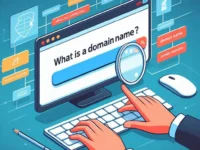Keyword Intent: Types and Examples to Boost Your SEO

Are you wondering why some product leads in Google search engine pages are at the top? while others guide you about the blog post or how-to guides?
The secret behind this is something called “keyword intent.” Understanding this concept is like having a secret weapon in your SEO. It helps you attract the right audience, boost your rankings, and ultimately, achieve your online goals.
What is Keyword Intent?
keyword intent is the reason behind someone’s search. It’s what they’re getting to find when they type something into Google. Are they looking for information? Trying to buy something? Maybe they just want to visit a specific website.
Knowing the intent is helpful and telling you what type of searching or demanding users are.
This makes Google happy because it’s all about delivering relevant results. And when Google is happy, your website gets more visibility.
The 4 Main Types of Keyword Intent
Let’s break down the four primary categories of keyword intent. Each with its own purpose and place in your SEO strategy:
Informational Intent
This is the most common type. People are seeking information, answers to questions, or guidance on a particular topic. In this post, we always provide the information in the sense of guidelines. Question answers and queries that users search.
Examples:
- “How to make sourdough bread”
- “Best hiking trails near me”
- “What is blockchain technology”
Where to Use Them:
Following are some examples where we can use this type of article.
- Blog posts
- Articles
- How-to guides
- Tutorials
- FAQs
Pro Tip: for informational Create comprehensive, informative content that answers users’ questions thoroughly. Optimize for featured snippets (those boxes at the top of Google results) to get even more visibility.
Navigational Intent
Here, people are looking for a specific website or webpage. They already know where they want to go. they just need help getting there. In this case, people directly search for the brand with the name.
Examples:
- “Facebook login”
- “YouTube”
- “New York Times”
Where to Use These Keywords
For more users Focus on optimizing your website’s structure and internal linking to make it. easy for users to find what they’re looking for.
Users can move from one page to another for detailed information.
Pro Tip: While these keywords might bring traffic. They might not lead to conversions (like sales or sign-ups). Focus on user experience and branding for these searches.
Transactional Intent
Users with transactional intent are ready to buy! They’re looking for products, services, or deals.
Examples:
- “Buy iPhone 14”
- “Cheap flights to London”
- “Best web hosting deals”
Where to Use Them:
- Product pages
- Service pages
- Landing pages with special offers
- E-commerce category pages
Pro Tip: to get more sales Optimize your pages with clear calls to action. Create clear product descriptions. and a smooth checkout process to convert these searchers into customers.
Commercial Investigation
This is a hybrid of informational and transactional intent. Users are researching before making a purchase decision. They might be comparing products, looking for reviews, or exploring different options.
Examples:
- “Best laptops for students”
- “iPhone 14 vs. Samsung Galaxy S23”
- “Top CRM software for small businesses”
Where to Use Them:
- Comparison articles
- Product reviews
- Buyer’s guides
- “Best of” lists
Pro Tip: Provide detailed information to help users make informed decisions. This builds trust and positions you as an authority in your niche. By providing the details and without any hidden information we can get more leads.

Why Keyword Intent Matters for Your SEO
Understanding and optimizing for keyword intent is crucial for several reasons:
Better Rankings:
Google’s algorithm prioritizes relevance. When your content aligns with search intent, you’re more likely to rank higher.
When you provide the information according to the user intent it is likely for users and search engines. Then it will increase your ranking.
Quality Traffic:
In this way, we can get quality traffic which can attract the users who are really interested.
Conversion Rates improve:
By targeting keywords with transactional intent, you bring in users who are ready to buy.
Improved User Experience:
When you give the exact thing which they want. Then they lead to a positive interaction with your website.
How to check the Keyword Intent
Here are a few simple ways to figure out the intent behind a keyword:
Look at the Search Results:
First of all, we will check What kind of content is ranking. Are they blog posts, product pages, or something else? Then the people search queries are also helpful.
Use Keyword Modifiers:
Words like “buy,” “review,” or “how to” give you clues about intent.
Put Yourself in the Searcher’s Shoes:
Why would someone search for this term? What are they hoping to find?
The Power of Keyword Intent in Action
Let’s say you run an online store that sells hiking gear. You could create content like:
Informational: “The Ultimate Beginner’s Guide to Hiking”
Commercial Investigation: “Best Hiking Boots for Beginners”
Transactional: “Shop Our High-Quality Hiking Boots”
By addressing all types of keyword intent. you create a well-rounded SEO strategy that attracts a wider audience. and guides them through their journey from researching to purchasing.
Keep Your SEO Strategy on Point
Understanding keyword intent is not a one-time thing. As search trends change, so does intent. Keep your content fresh, relevant, and optimized for the right intent, and watch your SEO soar!
Regularly update your content, keywords, and user queries. Make sure your content still Aligns with what people looking for.
Conclusion:
Keyword intent isn’t just another SEO strategy. it’s a fundamental concept that can revolutionize your online visibility. By understanding and collecting the intent behind your target keywords. you can create content that is truly helpful to your audience. boosts your rankings, and drives valuable traffic to your website.
Next time take your time and create purely helpful and user intent content. These types of helpful content provide the information of users. First of all, we will check the intent of the user which he wants.
Are people looking to buy something, get information, or try to navigate the direct site?
With the user intent content will boost our SEO Strategy.
FAQs about Keyword Intent
1. Do I need to optimize for all types of keyword intent?
Ideally, yes. A comprehensive SEO strategy should address all four types of intent to attract a wider audience and cater to their different needs.
2. Can keyword intent change over time?
Absolutely. As trends and user behavior evolve, so does keyword intent. It’s essential to regularly review your keyword list and update your content accordingly.
3. How do I know if my content matches the search intent?
Look at the top-ranking pages for your target keyword. If they’re all blog posts, but you have a product page, there’s likely a mismatch in intent.
4. Are there any tools to help me with keyword intent research?
Yes, there are many SEO Tools available in the market that provide the keyword intent. SEMRUSH, AHREF Google keyword planner, etc.
5. Can I use the same keyword for different types of intent?
While it’s possible, it’s generally best to use different variations of a keyword to target specific intents. For example, use “best hiking boots. for commercial investigation and “buy hiking boots” for transactional intent.





